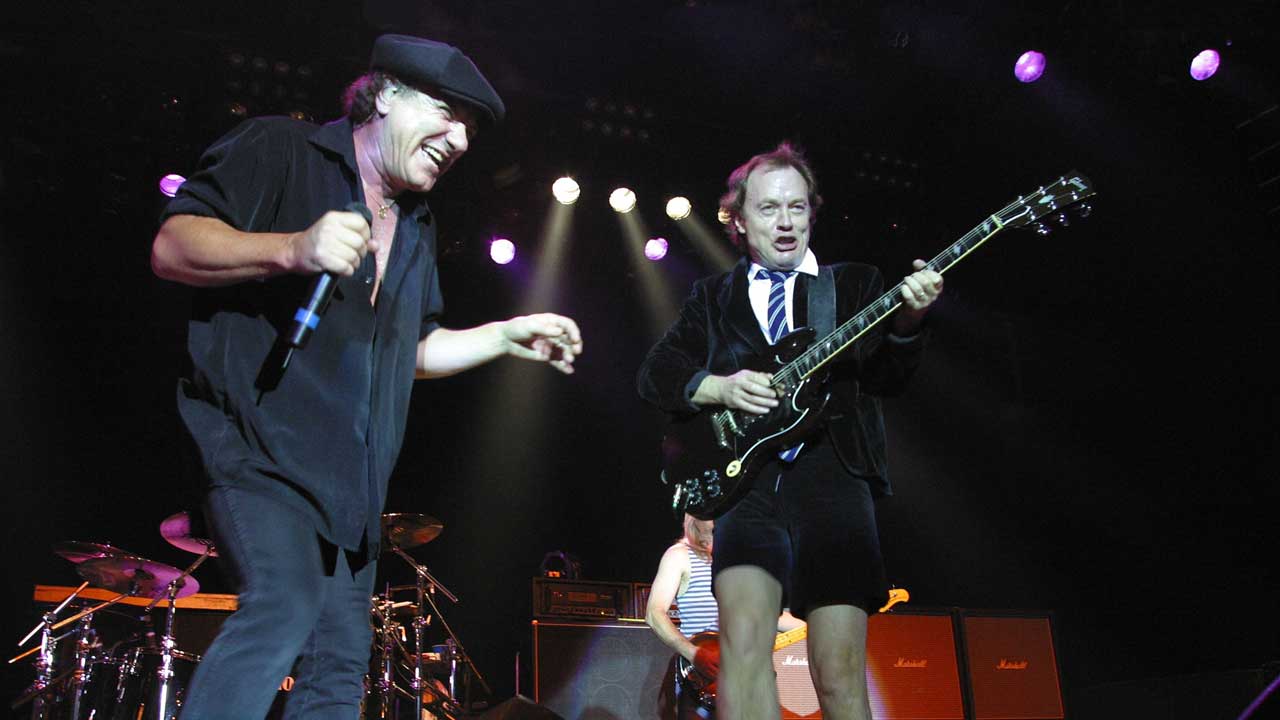
It's not every day that you get an invitation to open for the Rolling Stones at a 450-capacity open-air show, and only a fool would turn down such an offer. And, contrary to some people’s opinion, AC/DC are far from foolish.
Although June 2003 found the five-piece scattered across the globe during the writing of a new album that was rumoured to be produced by Robert John ‘Mutt’ Lange (Highway To Hell, Back In Black and For Those About To Rock) when the offer arrived, AC/DC dropped everything and flew to Europe to warm up for the Stones' gig, which was scheduled for the following month in Toronto, Canada.
The warm-up show, held on June 9, 2003, at the 3,000-capacity Columbiahalle in Berlin, was about as intimate a modern-day AC/DC show as anyone would ever experience, and word emanating from backstage was that the show would be both loud and hot. Such understatement!
With no announcement or intro tape, AC/DC ambled onto the dark stage and punched out the opening chords of Hell Ain’t A Bad Place To Be. It was as dynamic a start to a rock show as you might experience. And as the temperature rose they got better and better.
“How you doing?” growled Brian Johnson gruffly, adding with nonchalant familiarity: “This one’s called Back In Black”. As another signature riff chimed around the venue, all you could do was stand and stare. Just nine minutes into the gig, and AC/DC had already made just about every other rock band around sound redundant.
Their most recent album, Stiff Upper Lip, had been virtually overlooked in favour of their classics, although that record’s title track presented a reminder of its unexpected potency. Together with Lange, the possibilities of what AC/DC could achieve again were invigorating (in the end, Black Ice didn't emerge until 2008, with Lange's name nowhere to be found – it was produced by Brendan O'Brien).
With Johnson and rhythm guitarist Malcolm Young now into their fifties, and the rest not too far behind, AC/DC had no right to sound this good. The guitar technique of Angus Young had certainly slowed down, but he was playing with more feel than ever. Likewise, it was hard to recall Johnson’s raucous voice sounding so impressive. And you’d be unlikely to find a leaner, more effortlessly precise rhythm section around than bassist Cliff Williams and drummer Phil Rudd.
Of three songs taken from Powerage, Gone Shooting and What’s Next To The Moon were perhaps unusual but entertaining inclusions, but Rock ’N’ Roll Damnation satisfied the less partisan elements in the audience. Johnson-era anthems like Thunderstruck, Hard As A Rock and Hell’s Bells also provided the perfect launch pad for a stunning, lengthy final run-in, leaving us wondering how the band could function in such blast furnace-like conditions.
The next day Johnson told Classic Rock that the longer than usual gaps between song were due to the musicians discussing what they could play next; such a good time was being had that they were actually adding songs to the set list. Rock And Roll Ain’t Noise Pollution led into Shoot To Thrill, then came T.N.T., Highway To Hell, the inevitable Whole Lotta Rosie and You Shook Me All Night Long.
Somehow the band dragged themselves back out for encores of Let There Be Rock and For Those About To Rock (We Salute You), the deafening cannons of a 21-gun salute almost drowning the band out in full flight.
Finally, two hours and ten minutes since they first took to the stage, AC/DC called it a night. As the gunsmoke cleared, there was a long, tantalising gap before house lights come up again. Unfortunately, even supermen have their limits.







